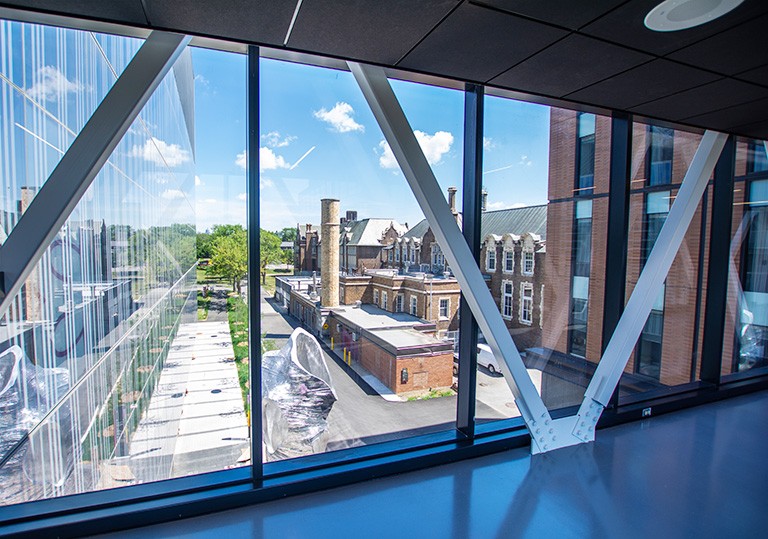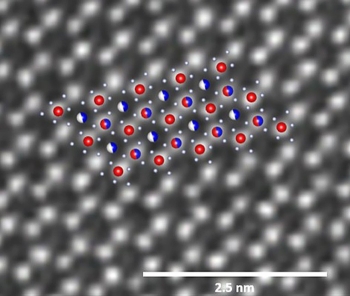“As a member of CeNSR at Concordia, the facilities at the hub will allow me to expand the size of my research group and take my program to the next level.”
New equipment is a big part of the attraction. “For example, the centre will have a new scanning electron microscope with an integrated energy dispersive X-ray spectrometer. It will allow us to view our micron-sized materials in a way that we could not view them with our naked eyes, to gain information about structure, elemental composition and particle size,” she says.
The hub also has a state-of-the-art scale-up facility, allowing researchers to make materials on the gram and kilogram scale. The ability to optimize the scale-up of these materials in-house is critical when working toward commercialization. “This is something we were unable to work on before,” Howarth says.
She is looking forward to working in close proximity with District 3, whose members will also be in the hub.
“With a growing research group, new research equipment, scale-up facilities and mentorship from District 3, the possibilities are endless.”
Space to grow and learn
Rafik Naccache (BSc 00, MSc 07, PhD 12), also an assistant professor of chemistry and biochemistry, shares his colleagues’ excitement about the new hub.
“Our research revolves around the synthesis of nanomaterials, specifically carbon dots, from sustainable and renewable materials. Our focus is to achieve a fundamental understanding of the physical, chemical and optical properties of these nanoparticles in order to tailor and design them for applications, which include bioimaging, sensing and catalysis,” he explains.



 John Capobianco: “This building allows us to compete on both a Canadian and an international scale.”
John Capobianco: “This building allows us to compete on both a Canadian and an international scale.”
 Image taken from Angewandte Chemie International Edition, Volume 58, Issue 29.
Image taken from Angewandte Chemie International Edition, Volume 58, Issue 29.


